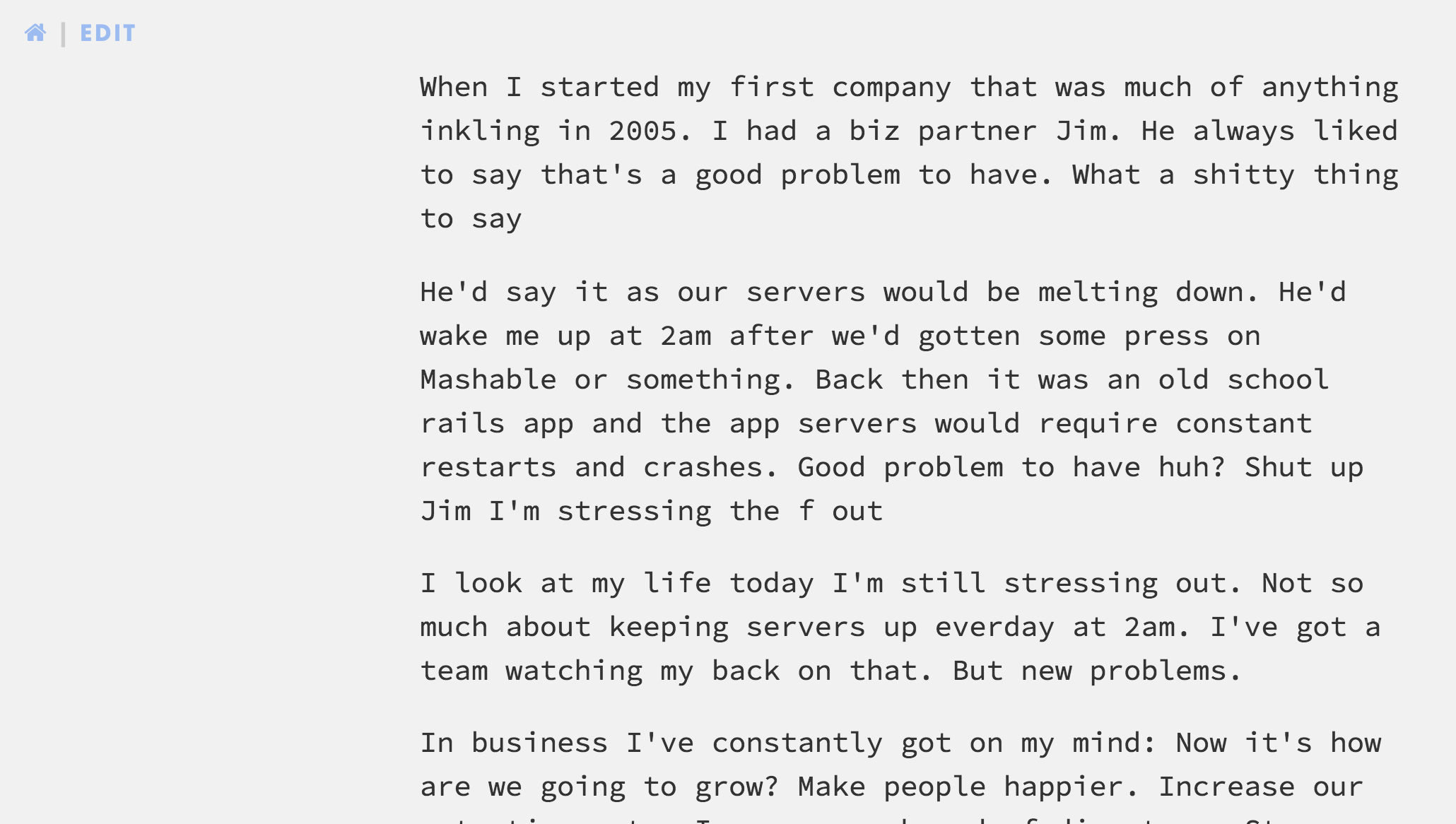Billy Schrero asks about my incredibly popular YouTube channel. 🙂 I kid, I kid. But it has been growing nicely, the videos are getting more and more engagement. It’s been a great learning experience. And this is another great question I’ve experimented with.
“You write the film you want, shoot the film you can afford, and edit the film you have.” — Anon
At first I just grabbed a camera and started filming, and maybe that works for some, but I realized I could do better. So I started doing a little planning. I’ll write a short script now in a writing program like Draft and plan for a handful of “scenes” or shots with possible dialog. I don’t try to perfect this at all. It’s just rough thoughts. Each paragraph break is a new shot in my head.
I often try to get the dialog to fit into individual Tweet sized bites, as my goal is to keep the shot and dialog to 10 seconds or less. If you watch shots on TV/movies, you’ll be hardpressed to find a shot that lasts longer than 10 seconds, before the camera switches to some other character/angle/background. 10 seconds proves to be a great rule of thumb to keep you interesting. Sometimes I’ll go off script a bit and will talk for 30 seconds or more. But I’m really trying hard to keep a spoken thought under 10 seconds.
One key benefit to the script is it helps remove repetition. There’s something about repeating oneself that stinks an even stinkier smell on video then on the written page. A script helps you focus down your ideas so you don’t end up rambling on camera.
With script ready, I’ll shoot each of those “tweets” by talking to the camera for 10 seconds (hopefully less than 10, but often more), then move onto another place or angle. But I’m never reading from the script. I just improvise what the idea was of that dialog I had planned.
As far as themes, it’s just random stuff I bump into that’s interesting. I read an insane amount. There’s always something interesting in say The Wall Street Journal (I get the paper version every morning. Want something easy to scan while you eat, and have kids dropping yogurt everywhere? Get a real paper), or the 10 magazines I have lying around. All these stories beg me to ask more questions and explore some threads a little further.
I’m also always on the lookout for questions. Sometimes it’s folks asking me directly, or I got to tons of forums like Reddit/Inbound/Quora noticing themes of what people generally like to ask. And I’ll keep those questions in my head as I think about my next topic.
And that’s about it for the planning. I’ll write up my 7–10 shots that I want to capture and I’ll find places to capture them during the day. I used to even try to plan where I think they’d occur, but I lost patience with that level of planning. Now I’ll just remember to shoot one of my pieces of dialog if I find myself in a neat place.
I keep my eyes peeled for interesting things going around. Whether it’s my kid, something on the skyline, or some movement that catches me. My eyes are constantly wandering for interesting things to capture. I wear a GoPro around my neck now just to make that even easier.
And then at the end of the day I have all this dialog and things I’ve done or captured. I’ll try and weave them together. Sometimes something happens where I realize I can grab some older footage from a previous day. And hopefully it comes together into something interesting 🙂
One last thing I’ll mention today about my process is I draw a bunch of inspiration from people breaking the 4th wall in TV and movies. My favorite: Ferris Bueller’s Day Off. Other interesting examples include mock documentary style video like The Office and Modern Family.
Hope that helps get the juices flowing for other people making videos!
P.S. You should follow my YouTube channel, where I share more about how history, psychology, and science can help us create better businesses. And if you find yourself overwhelmed while starting your own small business or handling customer support, check out how Highrise can help!



